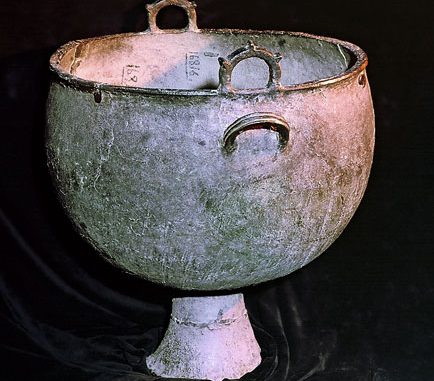
Cast bronze cauldron (76×78 cm) of the Ural-Altaic type. It has 2 handles on both sides (the upper ones are vertical, decorated with three protrusions, the lower ones are bent to the side). It was split in several places and fastened in ancient times with thick rivets. Kazan was found during a landslide on the bank of the Dnieper near the city of Katerynoslav. Kazan carries an important semantic load, namely, it symbolizes the unity of patriarchal families – baskets, which made up the society of the era of military democracy. Obviously, every basket maker had to own a cauldron. The bigger it is, the more people are “fed” by it. The story of Herodotus confirms this: in the area of Exampei (between the Dnieper and the Dniester), the Scythian king Ariant wanted to know the number of his population. He ordered each Scythian, under threat of death, to bring one arrowhead. There were so many of them that a large cauldron with a volume of 600 amphorae and a wall thickness of 6 fingers was cast from them. Even much later, the chronicler wrote about the famous Polovtsian khan Konchak that he could carry the cauldron across Sula, thereby emphasizing the strength and power of the “basket”.

